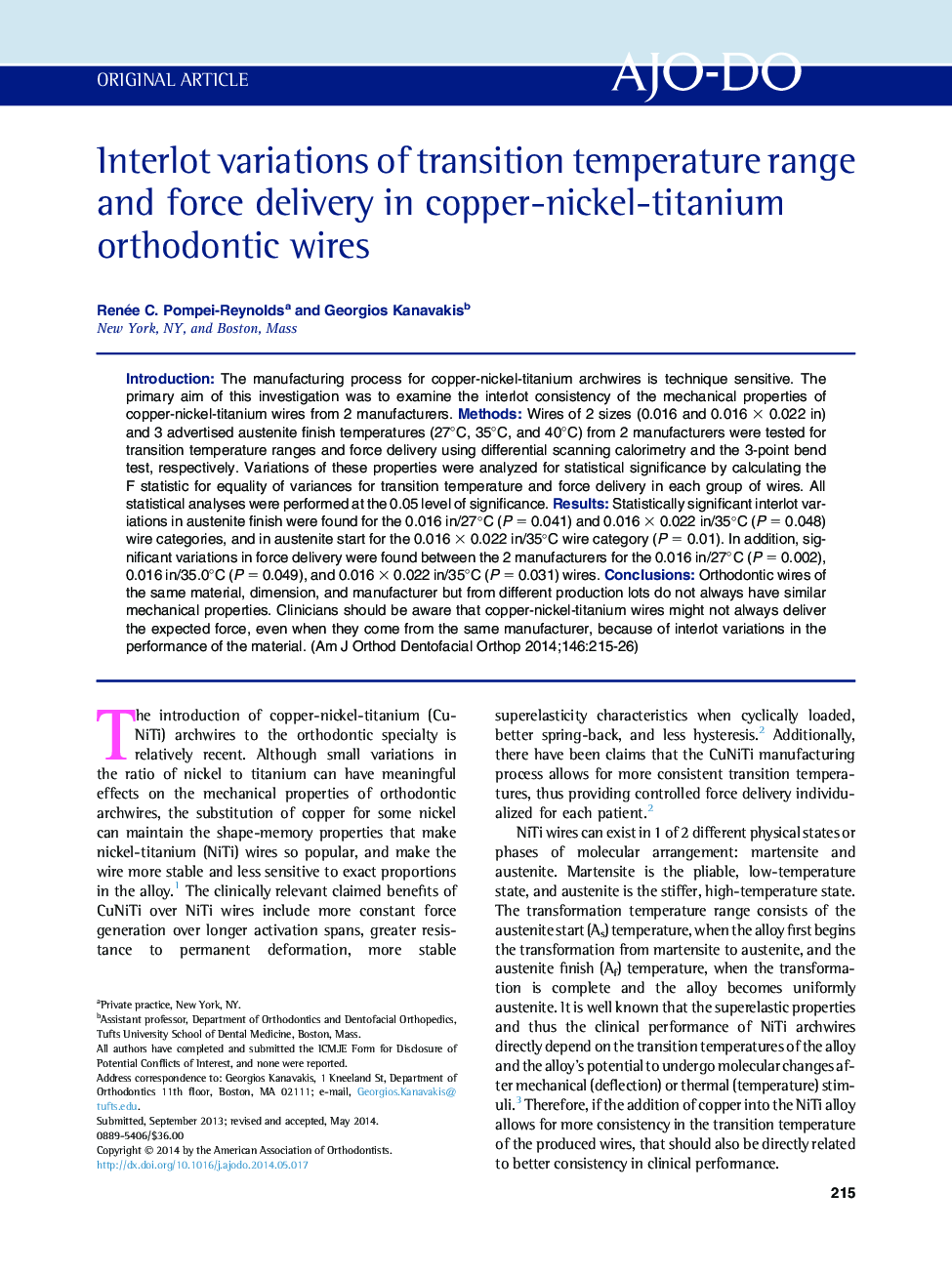| Article ID | Journal | Published Year | Pages | File Type |
|---|---|---|---|---|
| 3116418 | American Journal of Orthodontics and Dentofacial Orthopedics | 2014 | 12 Pages |
•There are significant inconsistencies in mechanical properties of CuNiTi wires.•There may be significant differences among production lots of the same wire type from the same manufacturer.•Both austenite start and austenite finish temperatures may impact the performance of CuNiTi wires.
IntroductionThe manufacturing process for copper-nickel-titanium archwires is technique sensitive. The primary aim of this investigation was to examine the interlot consistency of the mechanical properties of copper-nickel-titanium wires from 2 manufacturers.MethodsWires of 2 sizes (0.016 and 0.016 × 0.022 in) and 3 advertised austenite finish temperatures (27°C, 35°C, and 40°C) from 2 manufacturers were tested for transition temperature ranges and force delivery using differential scanning calorimetry and the 3-point bend test, respectively. Variations of these properties were analyzed for statistical significance by calculating the F statistic for equality of variances for transition temperature and force delivery in each group of wires. All statistical analyses were performed at the 0.05 level of significance.ResultsStatistically significant interlot variations in austenite finish were found for the 0.016 in/27°C (P = 0.041) and 0.016 × 0.022 in/35°C (P = 0.048) wire categories, and in austenite start for the 0.016 × 0.022 in/35°C wire category (P = 0.01). In addition, significant variations in force delivery were found between the 2 manufacturers for the 0.016 in/27°C (P = 0.002), 0.016 in/35.0°C (P = 0.049), and 0.016 × 0.022 in/35°C (P = 0.031) wires.ConclusionsOrthodontic wires of the same material, dimension, and manufacturer but from different production lots do not always have similar mechanical properties. Clinicians should be aware that copper-nickel-titanium wires might not always deliver the expected force, even when they come from the same manufacturer, because of interlot variations in the performance of the material.
